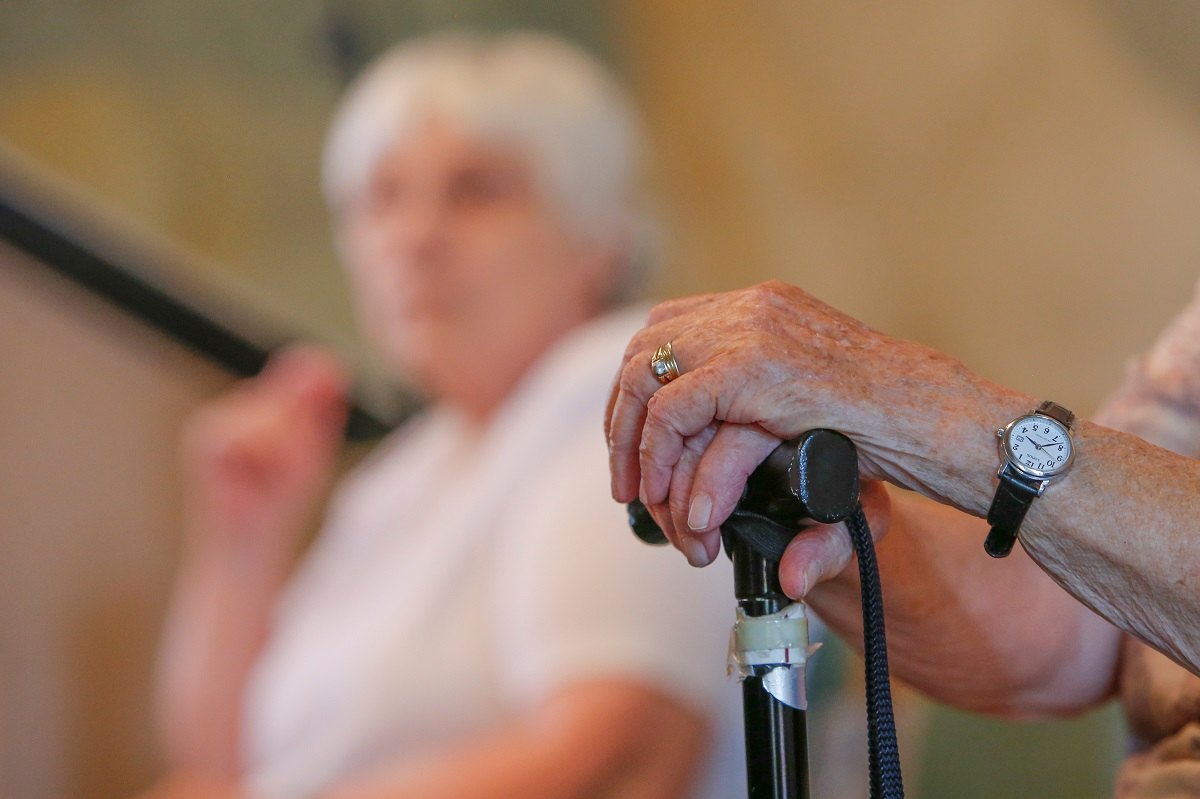
An image photo: Elderly people are seen in a home for the elderly in Dachau, Germany, June 28, 2017.
12:30 JST, May 15, 2024
A recent analysis found poor survival rates after bone fractures in older adults, with fewer than a third of men and half of women surviving five years after a fracture.
Published in JBMR Plus, the study looked at a cohort of 98,474 Ontario residents age 66 and older who suffered fractures to parts of the body associated with osteoporosis between January 2011 and March 2015. The patients were grouped into sets based on the fracture site and matched to patients with a similar demographic profile but no bone breaks during the study period.
The fracture cohort was mostly female (73 percent), and the median age at fracture was 80. In the year before the fracture, up to 45 percent of the women and 14 percent of the men had been treated for osteoporosis.
The analysis revealed that those within a year of a hip, vertebral or proximal non-hip, non-vertebral fracture were at the highest risk of death. The survival probability was lower for the oldest patients.
Hip fractures had the highest death risk: One year later, just 67.7 percent of men and 78.5 percent of women survived, compared with 92.2 percent of men with no fractures and 93.1 percent of women without fractures. Less than a third of men and half of women with fractures survived five years after a bone break. Survival rates were “marginally better” for those with vertebral fractures, the researchers write.
“Survival most dramatically declined within one month after most types of fracture, with a five-year survival being similar to or worse than some common cancers,” the paper’s lead author, Laval University department of medicine professor Jacques Brown, said in a news release.
The data suggests that intervening immediately after a fracture is best, the researchers write, though they also call for better prevention of falls and fractures. Those with severe fractures, men and those over age 85 are of special concern, the researchers write, but more data is needed to help clinicians target care. Clinicians might look to cardiovascular medicine for a model of how to monitor and intervene with at-risk patients, they suggest.
"News Services" POPULAR ARTICLE
-

American Playwright Jeremy O. Harris Arrested in Japan on Alleged Drug Smuggling
-

Japan’s Nikkei Stock Average as JGB Yields, Yen Rise on Rate-Hike Bets
-

Japan’s Nikkei Stock Average Licks Wounds after Selloff Sparked by BOJ Hike Bets (UPDATE 1)
-

Japan’s Nikkei Stock Average Buoyed by Stable Yen; SoftBank’s Slide Caps Gains (UPDATE 1)
-

Japanese Bond Yields Zoom, Stocks Slide as Rate Hike Looms
JN ACCESS RANKING
-

Keidanren Chairman Yoshinobu Tsutsui Visits Kashiwazaki-Kariwa Nuclear Power Plant; Inspects New Emergency Safety System
-

Imports of Rare Earths from China Facing Delays, May Be Caused by Deterioration of Japan-China Relations
-

University of Tokyo Professor Discusses Japanese Economic Security in Interview Ahead of Forum
-

Tokyo Economic Security Forum to Hold Inaugural Meeting Amid Tense Global Environment
-

Japan Pulls out of Vietnam Nuclear Project, Complicating Hanoi’s Power Plans






















